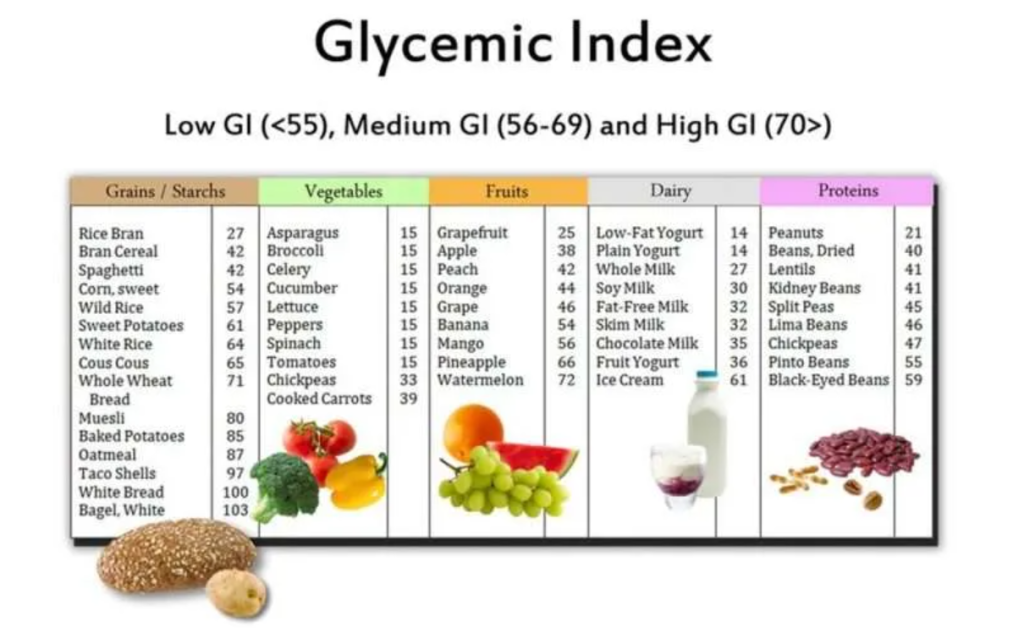Carbohydrates are a vital source of energy for the body, but their impact on blood sugar levels and overall health can vary significantly depending on their composition and how they are processed. Let’s delve into the intricate world of carbohydrate metabolism, the glycemic index, and the implications for health and well-being.
How Carbohydrate Metabolism Works:
When we consume foods containing carbohydrates, the digestive system breaks down the digestible ones into sugar, which enters the bloodstream. As blood sugar levels rise, the pancreas releases insulin, a hormone that signals cells to absorb the sugar for energy or storage.
Once cells have taken in the sugar, blood sugar levels begin to fall. In response, the pancreas produces glucagon, a hormone that instructs the liver to release stored sugar into the bloodstream. This delicate interplay between insulin and glucagon ensures a steady supply of blood sugar to cells throughout the body, including those in the brain.
Understanding Type 2 Diabetes:
Type 2 diabetes can develop when the body struggles to produce enough insulin or when cells become resistant to its effects. This condition, known as insulin resistance, can lead to persistently high blood sugar levels, causing various health issues over time.
Signs of vitamin C deficiency may include scurvy, a severe condition characterized by symptoms such as skin spots, bleeding gums, hair loss, and delayed wound healing. While rare in developed countries, vitamin C deficiency can occur with a limited diet lacking in fruits and vegetables or due to lifestyle factors such as smoking or alcohol abuse.
The Role of Glycemic Index and Glycemic Load:
Traditionally, carbohydrates were classified as “simple” or “complex” based on their chemical structure. However, this classification does not fully account for their impact on blood sugar levels and overall health. Instead, the glycemic index (GI) was developed to categorize carbohydrates based on how quickly and how much they raise blood sugar levels after consumption.
Foods with a high glycemic index, like white bread and sugary snacks, cause rapid spikes in blood sugar, while those with a low glycemic index, such as whole oats and legumes, result in a more gradual increase. Consuming many high-glycemic-index foods has been linked to an increased risk of type 2 diabetes, heart disease, and obesity.
Additionally, the glycemic load (GL) takes into account both the glycemic index and the amount of carbohydrate in a food. This measure provides a more comprehensive understanding of a food’s impact on blood sugar levels. Foods with a low or medium glycemic load are generally recommended for better health outcomes.

Glycemic Index and Glycemic Load in Common Foods:
- Low Glycemic Load (10 or Under): Bran cereals, apples, oranges, legumes, skim milk, carrots, nuts, and seeds.
- Medium Glycemic Load (11-19): Whole grains like barley, brown rice, oats, and whole-grain bread.
- High Glycemic Load (20+): Refined grains, sugary beverages, white potatoes, and processed snacks.
By choosing foods with a low or medium glycemic load and incorporating them into a balanced diet, individuals can better manage blood sugar levels and reduce the risk of chronic diseases associated with high-glycemic-index diets.
In conclusion, understanding the nuances of carbohydrate metabolism, the glycemic index, and glycemic load is essential for making informed dietary choices and promoting overall health and well-being. By prioritizing nutrient-dense, low-glycemic-load foods, individuals can support their health goals and optimize their quality of life.







